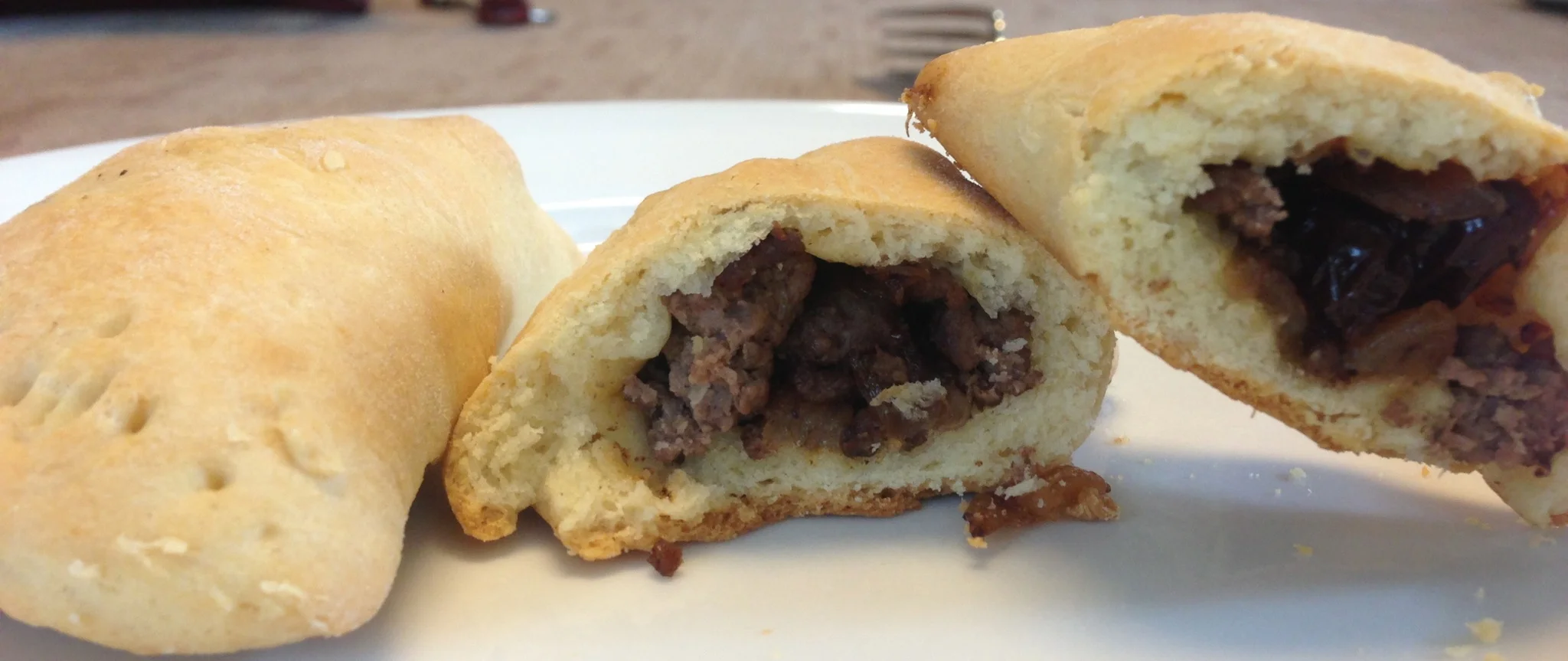Many people in the United States have the misconception that everything south of the border is the same—all of Central and South America is just a continuation of Mexico. And since we know what “Mexican food” tastes like, it is safe to assume that all Spanish-speakers eat spicy food and have chips and salsa with every meal. However, I cannot being to express how wrong this is; you’d be hard pressed to find an Argentine who can handle anything picante, and I’ve been searching to no avail for more than six months for tortilla chips. I did just find Mexican salsa a few weeks ago to my surprise in Buenos Aires’ Chinatown.
One food that most countries do have, albeit with their own special take, is the empanada, a baked or fried pastry filled with any assortment of meat, vegetables, or cheeses. Think of it like a baby calzone that you can eat whenever you want. Empanadas are super easy to find and usually cost about a dollar. In Argentina, they’re the go to social food and easy to grab for a snack when you’re running somewhere, or can even be an appetizer at a regular dinner or asado, a big barbeque. At my house, my host Delfi will make 30 to 40 empanadas and put them in the freezer, and we cook them as needed. They’re so prevalent in my diet that in November, I documented all the empanadas I ate, and at the end of the month it averaged out to one per day.
Loyal readers of this blog may remember my ill-fated attempt last summer at making empanadas myself. Thankfully, the real thing is a lot better. I’ve had empanadas now in Argentina, Chile, and Brazil, and while all delicious, it’s easy to see each country’s character in the recipe. Brazil has big fried empanadas filled with gooey cheese, think grease coming off on your napkin (or is it paper? Sometimes it’s hard to tell the difference.) In Chile, the empanadas are a lot bigger, and the one I tried was fried and had goat cheese and raisins.
Beef empanada and caprese (cheese, tomato, oregano) tostada in Buenos Aires. A tostada can be thought of as a bigger empanada in this case.
A sample empanada fold diagram. You use the images to help you determine what is in each empanada. (Image from http://www.matiasmoreno.com.ar/ box/repulgues.jpg.)
I have the most experience with Argentine empanadas, which are different depending on where you go in the country. In Buenos Aires, you can find most different types. The fold of the empanada is different depending on its filling, and sometimes the pizza-style boxes they come in have diagrams on the side of the box to help differentiate. There’s carne (beef, olives, hardboiled eggs, sometimes raisins, spices), pollo (chicken, usually tomato-type sauce, hardboiled eggs), jamon y queso (ham and cheese), verduras (usually spinach, creamy cheese thing), humita/choclo (corn niblets and creamy cheese), among others. When I was in the Northern part of Argentina, I tried quinoa and llama (yes, you read that right) empanadas.
I eat my empanadas with a fork—ideally, my empanada is hot and greasy, and I don’t want that on my hands. This is sometimes viewed as pretentious by Argentines, but in my defense, even in the United States I eat pizza, brownies, and other traditional finger foods with a fork and knife. My new meal staple might not be the healthiest of foods, but I can’t think of something else more integral to my Argentine diet.




